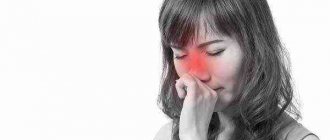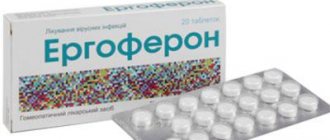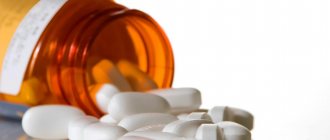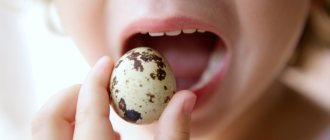Sugar is present in all food products and prepared dishes, without exception. Most people cannot imagine their life without sweetened tea and coffee, and confectionery.
loading…
Sugar is useful and simply necessary for the body for the normal functioning of internal organs, especially the circulatory system, heart muscle and brain.
A lack of sweet white sand can lead to serious consequences, cause weakening of mental activity, and impair memory, but an excess of the sweet substance is even more destructive for a person; too high a concentration of glucose provokes serious diseases and pathological processes.
Few people might think that sugar, when consumed in large quantities, provokes intoxication of the body, which is accompanied by a severe and very unpleasant symptomatic picture.
The harm and benefits of glucose
During the breakdown of complex carbohydrates, glucose and fructose are formed. Glucose easily penetrates the blood and travels through the circulatory system to every organ. It has a number of useful properties.
These include:
- direct participation in the body’s metabolic processes, easy absorption;
- restoration of working capacity and accumulation of bioenergy;
- stimulation of cardiac activity, positive effect on blood vessels;
- eliminating the feeling of hunger;
- relieving tension and stress;
- restoration of muscle tissue;
- removal of toxins in case of poisoning;
Glucose is used as a medicine for glycemia and serves as one of the main sources of nutrition for brain cells. An excess of glucose leads to disruption of the normal functioning of all systems in the body.
In case of overdose it is noted:
- metabolic disorders, decreased immunity;
- activation of the growth of fat cells, which leads to excess weight gain;
- increased cholesterol in the blood, which leads to the development of atherosclerosis and the formation of blood clots;
- allergic reactions
- violation of tooth enamel and degenerative processes in the soft tissues of the gums;
- development of autoimmune diseases.
A constant excess of glucose leads to an increased release of the insulin hormone and a double load on the pancreas. Such failures lead to the development of diabetes mellitus.
Lethal dose of sugar
› Medicine
There are toxic substances like mercury - just 200 milligrams can kill you. The authors of the AsapSCIENCE channel calculated lethal doses for everyday products such as coffee, sugar, chocolate and fruit.
drinking 70 cups of coffee can be dangerous for an adult The lethal dose of caffeine is 150-200 mg per kilogram of body weight. This amount can cause not vigor, but increased heart rate or even a heart attack.
Sugar is already associated with many diseases. But a single consumption of 29.7 grams per kilogram of body weight is considered fatal. For a person weighing 75 kilograms, the lethal dose is 10.5 glasses, or 2.2 kilograms of sugar at a time .
If we talk about alcohol, the critical level is 4-12 grams of ethanol per kilogram of weight. This means that 13 consecutive shots of strong drink can also be fatal. Ethanol is a depressant that depresses the central nervous system. It suppresses areas of the brain that control basic life functions such as breathing and heart rate.
Even just a large amount of liquid can be harmful to the body. If you drink about 6 liters of water , water intoxication will occur - a violation of water-salt metabolism in the body. This will cause brain cells to swell, which can cause headaches, seizures, coma, and even death in extreme cases.
But if you stop drinking water or eat too much salt, your brain cells will begin to shrink. This will lead to a condition known as hypernatremia. 48 teaspoons of the spice at a time is enough to cause a reaction that can also lead to seizures, coma and even death. 129 teaspoons of pepper is also lethal .
You may have heard that dogs should not be given chocolate. A substance dangerous to them - theobromine - can kill us too. True, our body processes theobromine more efficiently. The lethal dose for humans is 1000 mg per kilogram of weight. This is equivalent to 85 chocolate bars eaten at one time.
You shouldn't overeat on toothpaste either. Fluorides are safe in small amounts and can fill cavities. But swallowing 170ml tubes of toothpaste
Everyone always says to eat more fruit. However, to get an overdose of vitamin C, it is enough to eat 11 thousand oranges at a time.
What is beneficial in small doses can be deadly in large doses - for example, potassium. Potassium ions are essential for nerve signals and muscle contractions. However, potassium chloride is also used for lethal injections. You need to eat about 480 bananas to reach the injection amount. True, it is not a fact that the human stomach can withstand this.
Guys, we put our hearts into Bright Side. Thank you for revealing this beauty. Thanks for the inspiration and goosebumps.
Join us on VKontakte
As the alchemists said, everything is medicine, and everything is poison - it's just a matter of dose.
For safety reasons Bright Side decided to find out in what quantities the most popular products today can turn into deadly poison. The figures are calculated for a one-time use of the product by the average man weighing 80 kg.
Everyone has heard that you need to drink 2 liters of clean water. But if you overdo it a little and drink 3 times more, then your kidneys will not have time to remove fluid from the body.
Result: swelling of internal organs, brain and respiratory arrest. So, yes, you can get poisoned by the damn water.
What American Jennifer Strange recently demonstrated by drinking more than 7.5 liters at the “Who Drinks the Most Water” competition.
The lethal dose of caffeine is considered to be 15 grams. This is approximately 113 glasses of coffee (250 ml each).
Although it is worth noting that in this situation, a person will most likely die not from caffeine, but due to water intoxication, since 113 glasses is almost 30 liters of water.
So if you do not eat dry coffee with spoons, it is almost impossible to be poisoned to death by it. Well, unless you mix it with soda and energy drink, like a teenager from the USA.
Chocolate
Chocolate contains large amounts of a substance called theobromine. It is a powerful stimulant of the central nervous system. But if you eat about 10 kg of chocolate at a time, you risk being poisoned by it, which will first lead to nausea and diarrhea, then to epileptic seizures, internal bleeding, myocardial infarction and joining your great-grandfathers.
Water . You probably know that to feel good, a person should drink an average of two liters of water every day. But it turns out that you can die if you drink 3 times more water during the day, since our kidneys will not be able to process such a volume of liquid and remove it from the body. The result will be swelling of the internal organs and respiratory arrest.
One-half of one ounce (29.57 ml) of caffeine is considered a lethal dose. This amount is found in approximately 113 cups of coffee. It’s hard to imagine that someone could drink that much coffee, but if a person does manage to do this, he will die not only from a caffeine overdose, but also from excess water in the body, since 113 cups is almost 30 liters of water.
Normal for the human body
The amount of sugar in the blood is determined using laboratory tests. To take readings at home, a special device is used - a glucometer, which can be purchased at a pharmacy. The analysis is taken on an empty stomach or 8 hours after the last meal, otherwise the result will not be accurate. Normal values range from 3.4 to 6.2 mmol/l.
Immediately after eating, the blood sugar level rises significantly, but it should not exceed 7.8 mmol/l. If several hours have passed after eating and the sugar level is around 10 mmol/l, this indicates an overdose (hyperglycemia).
Products containing glucose
If we take into account that in the glucose formula there are large quantities of sugar molecules, then it is clear that most of it is contained in sweet foods. Refined sugar is the richest in this substance, containing almost 100% of it. The bee's working product - honey contains 80%, a lot of it in dates, gingerbread, etc. A fairly high percentage is found in cereals and pasta. For example, in buckwheat – about 60%, and in pearl barley – 67%.
It is interesting to know that the amount of glucose required by the body depends on the person's weight, multiplied by 2.6. In fact, if you weigh 60 kilograms, you can consume 156 grams of glucose.
In addition, when glucose enters the body with food, it can be an independent product, which is taken in the form of round, sweet tablets and lozenges. They are sold in every pharmacy, and are most likely familiar to everyone since childhood. Its price is low. If a person is in a hospital and there is a need for recharge, energy reserves need to be replenished, then droppers with a glucose solution are used, then it flows directly and quickly reaches the goal, ending up directly in the blood.
Symptoms and signs of overdose
In order to timely determine an excess of glucose in the blood, you need to know the symptoms of an overdose. They appear if the glucose norm is exceeded 4 times compared to the standard dosage.
Symptoms of hyperglycemia:
- constant feeling of thirst and dryness in the mouth;
- feeling tired, general lethargy;
- tremors of hands and body
- itching all over the body;
- foggy consciousness;
- cardiopalmus.
Children often experience an overdose of glucose due to an increased love for sweets. If this does not happen systematically, then mild symptoms appear in the form of indigestion, flatulence and nausea, which disappear on the second day.
Poisoning the body with glucose leads to a sharp increase in blood sugar levels and negatively affects the functioning of all organs and systems of the body. In adults and children diagnosed with diabetes, an overdose of glucose leads to more pronounced symptoms.
Overdose is possible with intravenous administration of ascorbic acid with glucose. When there is a deficiency of vitamin C during pregnancy, it is removed using intravenous injections. In this form, the drug is administered into the body through a dropper under the supervision of medical professionals.
Symptomatic picture
The first signs of poisoning are similar to ordinary food intoxication - the general condition suddenly worsens, the person feels nausea, which turns into vomiting attacks.
There are unpleasant sensations in the abdomen, pain, severe bloating.
The remaining signs of hyperglycemia may have their own distinctive features for each patient, depending on how high the concentration of the substance is in the circulatory system, and what the general condition of the person is, whether there are chronic diseases. The hyperglycemia clinic is as follows:
- a constant feeling of intense thirst that cannot be quenched;
- dryness of the mucous membrane in the oral cavity;
- skin discomfort, itching;
- increased urge to urinate;
- more urine is produced than usual;
- rapid loss of body weight;
- headache;
- attacks of dizziness;
- visual impairment.
Sugar poisoning can be acute or chronic. If a person eats more white sweet powder at one time than the body can absorb, the symptoms will appear quickly and have severe intensity; there is also slow poisoning, when a person does not have a culture of eating, he eats a large amount of foods enriched with glucose.
In the second case, the signs most often appear gradually, and the patient may not immediately associate the worsening of his condition with the fact that he is not eating properly and will never think that sugar is to blame.
An overdose of glucose leads to very serious consequences, disrupting the functioning of all internal organs, especially the kidneys and heart muscle. Glucose is a substance with the ability to attract water molecules.
For this reason, fluid begins to rapidly leave the body. This is why a person with sugar intoxication experiences frequent urination and an increased volume of urine, and dry mucous membranes occur.
With a gradual increase in glucose levels, the poisoning is slow, and the patient begins to experience problems with the process of regeneration of skin cells. Any, even the smallest cuts take a very long time to heal, providing a breeding ground for pathogenic, disease-causing microflora. Purulent foci form, the immune system decreases.
In the presence of chronic diseases, their exacerbation begins, an individual symptomatic picture is added, and the general condition begins to deteriorate significantly.
An overdose of glucose requires immediate first aid and calling doctors.
First aid for overdose and treatment
First aid for a glucose overdose consists of measures aimed at reducing the amount of sugar in the blood. The easiest but longest-lasting way to normalize glucose levels is diet. The daily diet is filled with foods with a low glycemic index.
Added to the menu:
- fresh cucumbers;
- grapefruit fruit;
- boiled onion;
- lettuce leaves;
- from berries - dogwood.
It is important to drink as much fluid as possible to normalize the functioning of the circulatory system. When blood sugar is high, the blood becomes viscous, and water will help dilute it and prevent the formation of blood clots.
An increase in sugar in diabetics can provoke coma and, as a result, death. That is why people with this diagnosis should review the daily menu, exclude sweets and alcohol from the diet and strictly adhere to dietary nutrition. If the blood sugar level reaches a critical level, patients are transferred to insulin. This form of diabetes is considered the most dangerous, because the body slowly dies without another injection of insulin. Glucose overdose in insulin-dependent diabetics is treated by administering the drug every 2-3 hours until the sugar level returns to normal.
If the effect of home therapy is unstable or zero, you should seek medical help. After a thorough examination, the doctor will prescribe an effective treatment regimen and advise on maintenance therapy to avoid similar problems in the future.
In severe cases of poisoning, medications are administered intravenously through IVs. The attending physician selects all medications individually based on the general condition of the patient and the presence of other diseases.
If an overdose is recorded by administering ascorbic acid with glucose, then it is necessary to immediately cleanse the stomach of toxins by forcibly inducing vomiting and use adsorbents (Smecta, Enterosgel or activated carbon).
If an allergic reaction occurs, it is recommended to take any antihistamine and seek medical help at a clinic.
Giving help
The most important thing is prevention, which consists in constantly having in your diet foods that reduce sugar content. Among these are dogwood, boiled onions, fresh cucumbers, grapefruits, and all types of lettuce. It is imperative to maintain a drinking regime so that a sufficient amount of fluid thins the blood. You can use antidotes that reduce blood glucose levels. They are taken as prescribed by a doctor. Diabetes mellitus is considered a disease that completely subjugates a person’s life, with constant insulin injections. Therefore, you should be more careful about your glucose level, which should always be normal.
Glucose overdose: consequences and prevention
To protect yourself from the unpleasant consequences of a glucose overdose, you need to consume sweets in moderation, minimize the amount of sugar in your daily diet and give up alcohol. Alcohol intoxication and high sugar levels increase the load on the liver and pancreas.
It is advisable to replace fatty, salty and high-carbohydrate foods with baked meat or fish with vegetables and herbs, and forget about alcohol completely.
With excess sugar in the blood, liver and kidney failure develops, and the functioning of the vascular system and heart muscle is disrupted. If the symptoms of hyperglycemia are not detected in time, the consequences can lead to fainting and coma. Toxicosis, progressing to vomiting, excessive dry mouth and mental fog are the main symptoms of intoxication.
An increase in glucose levels does not manifest itself in every person with clear symptoms, so it is recommended to undergo an annual medical examination to exclude the development of diabetes mellitus and other related diseases.
Sugar can be poisonous too
Regular sugar is poison if its consumption is excessive. Poisoning can be caused not only by a sweet substance, but also by harmful microorganisms that multiply well in confectionery products. If you treat yourself to a sweet cake with fluffy cream, you may encounter an infection.
The symptoms of sugar poisoning are quite specific and easy to identify:
- increased excitability is noticeable, which after a while gives way to aggression;
- there is pain in the stomach area;
- There may be nausea and vomiting;
- the person is tormented by severe thirst, but urination is impaired.
If a person remains alive after severe poisoning from sweets, then his pancreas is depleted, which is why diabetes develops over time.
The body activates all resources to digest the shock amount of sweets, due to which the functioning of the stomach and intestines is disrupted.
What happens if you eat a lot of ascorbic acid - video
Read further:
What cucumbers can cause poisoning: first aid and consequences
The benefits of water and how to maintain water balance in the body
How to quickly induce vomiting after eating at home for weight loss
How to clean blood vessels with folk remedies
Herbal remedies and treatment of attention deficit disorder without drugs
Article rating:
Share with friends:
You may also be interested in:
How to take white coal for food and alcohol poisoning
How to take enterosgel for poisoning and intoxication for children and adults
How to take Filtrum for food and alcohol poisoning for children and adults
List of absorbents for poisoning of children and adults
Lethal doses of foods and more
In our life, it is very important to observe moderation and proper concentration in everything. This was very accurately expressed by one of the founders of modern pharmacology, Paracelsus (1493 - 1541).
) in his famous phrase: “Everything is poison, everything is medicine; both are determined by the dose.”
Absolutely every substance, even the most irreplaceable and necessary for the continuation of life, has its own lethal dose, which, moreover, is not so great.
1. Alcohol
Alcohol, of course, is not a vital food product, but many people love to use it as such, often completely forgetting about any measure. A single lethal dose for a person ranges from 4 to 12 grams of pure alcohol per kilogram of weight.
Also, for an adult male, a lethal concentration will be the presence of 5-6 ppm of ethanol in the blood (1 ppm of a substance means that 1 liter of liquid contains 1 ml of this substance).
This concentration can be achieved by drinking about 3 bottles of vodka in one sitting (unless, of course, the body’s natural defenses work in the form of an urgent release of excess toxic substance in all possible ways). But there are also funny cases.
For example, in 2004, in a hospital in the Bulgarian city of Plovdiv, 9.14 ppm of ethanol was found in the blood of a pedestrian hit by a car. The test was repeated several times, and all the time a concentration was obtained that was many times higher than the lethal one. The most interesting thing is that the unusual patient soon recovered.
Despite its toxicity, ethanol can be used as an antidote for poisoning with other alcohols (for example, methanol or ethylene glycol).
2. Vitamins
Absolutely all vitamins essential for life are terrible poisons if consumed without measure. Sometimes both a deficiency and an excess of a particular vitamin leads to very similar external manifestations. For example, vitamin A deficiency and hypervitaminosis will have dry, rough skin and increased hair loss as a symptom.
The amounts of vitamins in which they are vital are usually very small, and exceeding these concentrations leads to either acute or chronic poisoning.
The doses in which vitamins can be taken must be indicated on the packaging of the drug, because in order to kill or seriously injure yourself, one or two pharmacy packages are enough.
3. Sunlight
After several years of regularly recurring heatwaves, even northerners know how dangerous the Sun can be. From the beginning of the twentieth century until about the 80s, it was generally accepted that the more time you spend in the sun , the healthier you will be.
But now it is already known for sure that excessive exposure to the Sun leads not only to purely external skin defects, but also to such “long-term” consequences as accelerated aging, decreased sexual function and the development of cancer (insufficient exposure to the Sun is also fraught with absolutely the same consequences).
Sunstroke is an extremely dangerous condition, it develops suddenly, and the mortality rate reaches 30%. Therefore, if a person begins to feel unwell while in the open sun, it is better to play it safe and try to go into the shade.
4. Nicotine
Nicotine is not only found in tobacco. There is quite a lot of it in potatoes, tomatoes, eggplants and green bell peppers. True, the nicotine contained in these plants does not cause harm due to its insufficient concentration.
Nicotine is a powerful poison not only for all warm-blooded animals, but even for insects.
Sensitivity to nicotine in different animal species is very different: for example, rats die when receiving 50 mg per kilogram of weight, mice need 5.9 mg, and for humans a dose of 0.5-1 mg per kilogram of weight is fatal (for comparison, it is fatal The dose of the famous potassium cyanide is 1.7 mg per kilogram of weight). When smoking, most of the nicotine contained in a cigarette simply burns and turns into a less toxic poison. To kill yourself immediately, rather than gradually, you need to smoke about a hundred cigarettes in one sitting.
5. Table salt
Without salt, no living creature can live. But the daily requirement of this substance is extremely small - only 1.5-4 g.
If the body experiences a chronic lack of salt, then bone destruction and muscle death begin, the functioning of the heart and stomach is disrupted, severe depression and other mental illnesses develop.
A complete lack of salt in food (although this situation rarely occurs) can kill in about 10 days.
Excess salt is no less dangerous than its deficiency. Everyone has known for a long time that “salt is white poison” when there is too much of it. For humans, the lethal dose is a single consumption of about 250 g of salt. Death will be very difficult, since you will have to die from numerous edemas.
6. Caffeine
Caffeine is found in coffee, tea, cola and many other plants. In small doses, it causes a surge of strength and a feeling of vigor, which, however, after 3-6 hours are replaced by increased fatigue, lethargy and depression.
A lethal dose for a person is 10 grams of pure caffeine (provided that all of it enters the blood).
That is, in order to be poisoned to death, for example, by good Italian espresso, you will need to not only drink about 4.5 liters of this excellent drink at a time, but also thoroughly absorb all the caffeine it contains.
7. Water
Water is the basis of life. Everyone knows this. However, you can not only drown in water, you can also get poisoned by it, and with absolutely clean, drinking water, if you drink too much.
If too much water enters the body, a state of hyperhydration occurs, leading to disruption of water-salt metabolism, numerous disorders of all body systems and death. To achieve this state, you need to drink about 7 liters of water during the day.
Water poisoning is rare, but does happen sometimes. For example, soldiers become victims of water poisoning after grueling cross-country runs in the heat.
But there are also funny cases - for example, the English schoolgirl Lee Bett in November 1995, celebrating her 18th birthday, first took Ecstasy, and then drank 7 liters of water in just an hour and a half. Death occurred within 4 hours.
In June 2002, in the American city of Springville, a mother forced her 4-year-old daughter to drink almost 4 liters of water as punishment. The child died and the mother went to prison.
In January 2007, Sacramento, California radio station KDND ran a surprisingly stupid contest called Hold Your Wee for a Wii.
One of the participants in this competition, Jennifer Strange, who drank 7.5 liters of water, died before reaching the final. And the winner of the competition (Lucy Davidson) became seriously ill.
As a result, relatives filed multimillion-dollar lawsuits against the radio station and won them.
8. Electricity
There is no need to warn about the dangers of household electricity - almost everyone who uses electrical appliances sooner or later gets the opportunity to learn from their own experience that an electric discharge can be very unpleasant. Nowadays you can get a very painful electric shock without even using any devices.
This happens especially often in winter, when the air in apartments is dried out by central heating, and sparks fly off clothes and hair with every movement. If the strength of the current passing through the human body exceeds 1 mA, then this already causes very unpleasant sensations.
A direct current of 60 mA or an alternating current of 300-500 mA can lead to a malfunction of the heart (or restore the functioning of a heart that has just stopped).
To kill a person using the electric chair, a voltage of 2700 V and a current of 5 A are used. The voltage is turned on twice for about a minute with a break of 10 seconds. This is usually enough to kill the strongest person. But on October 16, 1985, it took 5 such blows to execute William Vendiver.
9. Mosquitoes
A female mosquito, if left undisturbed, can suck about 5 mg of blood from a person. For a person, a loss of about 2.5 liters of blood is fatal.
It turns out that a person can be “bitten to death” by about half a million mosquitoes.
But in this case, most likely, death will occur much earlier from a reaction to the mosquito saliva, which they inject during a bite (it is their saliva that causes itching, swelling and other reactions).
10. Sausage 100 g of sausage (and any processed meat products) contains about 2 g of salt. Salt in large quantities is deadly to humans. About 3 kg of sausage contains a lethal dose of salt (65 g) for a person of average weight.
When consuming a lethal dose of salt: 1) due to the large amount of sodium, fluid from the cells rushes into the bloodstream, which leads to increased pressure; 2) human tissues begin to dehydrate and gradually die. The human brain can be especially badly affected, since it contains a lot of fluid. Due to dehydration, the brain may stop functioning and the person will die.
11. Chocolate Chocolate contains a large amount of sugar. Sugar in large quantities is deadly to humans. 1 kg of chocolate contains a lethal dose of sugar (700 g).
When you take a lethal dose of sugar: 1) the body begins to produce insulin, which tries to reduce sugar levels; 2) there is not enough insulin, so the body tries to remove sugar in the urine; 3) together with sugar, a large amount of water is removed from the body, which leads to dehydration of the body. A person can die due to dehydration.
Source: https://odomah.org/540348856256170917/smertelnye-dozy-produktov-i-ne-tolko/
Therapy
Treatment is aimed at timely detection of signs of hypoglycemia, monitoring the condition and preventing the development of pathology.
Prevention
Preventive measures include the correct selection of the dose of insulin and glucose-lowering tablets. It is necessary to monitor the combination of all medications taken by a diabetic to prevent an undesirable increase in the hypoglycemic effect.
Drug treatment of hypoglycemia
To reduce the symptoms of hypoglycemia, tablets containing glucose are used. In severe cases, when it is urgently necessary to increase the sugar level, 40% Glucose, as well as Glucagon, Adrenaline, and Hydrocortisone are administered intravenously.
Prerequisites for hypoglycemia in diabetics
Patients with diabetes have their own reasons for the development of hypoglycemic conditions; they are mainly associated with poor nutrition and inadequate treatment.
Why do glucose levels drop in diabetics?
- Insulin overdose associated with inaccurate dose calculations, malfunction of the glucometer and syringe pen.
- A mistake made by doctors who incorrectly drew up a treatment regimen.
- Uncontrolled use of sulfonylurea drugs that provoke hypoglycemia.
- Replacement of medications without taking into account the duration of their prolonged effects.
- Retention of insulin and other hypoglycemic drugs in the body due to poor kidney and liver function.
- Inappropriate insulin injection (instead of pinching under the skin - an intramuscular injection).
- If you massage the injection site immediately after the injection, hypoglycemia increases.
- Inadequate physical activity, especially when hungry.
- Skipping a meal time or having a weak snack.
- A low-calorie diet for losing weight without taking into account your insulin levels.
- When drinking strong alcoholic drinks, sugar can drop very sharply.
- With malabsorption, when food is poorly absorbed, with autonomic neuropathy, which slows down the evacuation of stomach contents, even after a hearty lunch, the sugar level may remain below normal.
Signs of hypoglycemia can be observed in the warm season, since the need for insulin in the summer for many diabetics decreases.
Constant craving for sweets
The constant desire to eat sweets is a direct sign of excessive sugar consumption. It acts like a drug and gives a short-term burst of energy, which later leads to addiction. Elevated sugar levels lead to a hormonal surge, and when levels drop, the body craves more sugar. You can get rid of such addiction only with the help of a proper diet rich in nutrients that help maintain energy levels and hormonal balance.
Dry mouth
The first and most noticeable sign of dehydration, which we talked about in the previous paragraph. At the same time, you need to understand that if you compensate for the lack of water with sweet soda, it will not bring anything good. Very soon you will want to drink again, because the new sugar will also need to be removed somehow. So still mineral water is your best choice. Moreover, it must be mineral, because various salts necessary for the normal functioning of the body are also excreted in the urine.
Excess weight
Many people mistakenly believe that weight is gained solely from fatty foods, and sugar does not contain fat, so it seems completely safe. These are just common misconceptions. Eating a lot of sweets is filling your body with empty calories, without healthy proteins and fats. The feeling of fullness in such cases passes very quickly, so the person always wants to repeat the dose of sweets. Meanwhile, insulin is released in the blood. When eating a large amount of sweets, the body is not able to adequately respond to the production of large amounts of insulin. Thus, the body gains excess weight and there is a significant load on the pancreas, which in turn increases the risk of diabetes.
Blood sugar has dropped - what to do?
For whatever reason, your blood sugar drops, it is vital to urgently replenish the glucose deficiency. While the victim is conscious, you need to give him foods with fast carbohydrates and a high glycemic index, which are immediately absorbed into the blood.
Sugar cube, honey, candy, jam, sweet juice and ripe fruits with high fructose content (banana, dates, apricots, melon, grapes) are suitable. This will help relieve symptoms already at the first stage of the pathological condition.
Hypoglycemia is dangerous due to repeated attacks; in order to prevent the next hypoglycemic wave, complex carbohydrates are needed, which are absorbed more slowly. A sandwich with butter and sweet coffee or tea, as well as porridge, are quite suitable.
If the victim is already unconscious, it is useless to try to feed him - an immediate injection of glucose-containing medication is necessary, followed by calling an ambulance.
The rapid onset of hypoglycemic conditions primarily threatens diabetics with type 1 disease, when an overdose of a drug or a violation of the schedule for taking it can lead to a sharp drop in sugar. Diabetics, as a rule, know about their problems, so they always have glucose tablets with them, which quickly relieves an attack.
The risk of hypoglycemic consequences will significantly reduce compliance with the food intake: snacks every 3-4 hours. Diabetics with type 1 disease should measure their sugar on an empty stomach, before each injection and at night.
With type 2 diabetes there is no such strict schedule, but it is advisable to record glucometer readings in a diary once a week. Your doctor will give you more precise recommendations, taking into account the type of medication and the body’s reaction.
Symptoms of hypoglycemia
Brain nutrition is directly related to glucose. The body reacts very violently to a severe lack of this carbohydrate, since hypoglycemia can lead to irreversible disorders of brain function. Symptoms depend on the severity of the condition.
Mild hypoglycemia can be manifested by anxiety and the occurrence of “ravenous” hunger. If you do not take action and normalize your sugar level, the situation will worsen. Severe degree (hypoglycemic coma) is characterized by loss of consciousness and dysfunction of vital organs.
Symptoms:
- anxiety, nervousness;
- “wolfish”, uncontrollable hunger;
- increased sweating, pallor;
- dizziness, headache;
- panic fear;
- tremor;
- arrhythmia;
- blurred vision;
- weakness in the legs;
- decreased self-control;
- convulsions;
- loss of consciousness;
- hypoglycemic coma.
Blood sugar has dropped: symptoms, what to do
The condition can be recognized by the following signs:
- Severe weakness;
- Increased sweating;
- Cardiac dysfunction class=”aligncenter” width=”1000″ height=”750″[/img]
- Tremor of the limbs;
- Panic attack;
- Uncontrollable hunger;
- Mental disorder;
- Fainting;
- Glycemic coma.
Uncontrolled appetite is a frequent companion to impending hypoglycemia. In diabetics, many medications provoke either a decrease in appetite or ravenous hunger.
After hard physical work, hunger may simply be a sign of fatigue, or it may also be one of the symptoms of glucose fluctuations, when cells lack energy and send signals to the brain. When a diabetic feels hungry, the first thing they need to do is check their sugar levels using a glucometer.










